I've been wanting to make this bread since getting the book, so this was a great excuse.
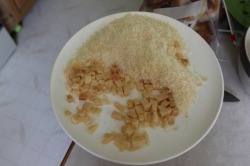
Unlike the sourdough breads I've been making, this one is enriched with cheese and a bit of oil. Here I'm using Parmesan, half grated, half cubed.
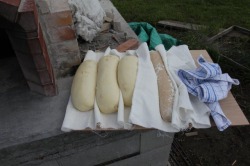
The bread also called for some additional yeast. In hind sight, I should have skipped that one. It was a warmer day and the starter was very active on it's own. As it was, the dough proofed (and over proofed), quickly. Here they are bloated in the couche next to some whole wheat SD. They visibly deflated and let out a sad sigh when scored.
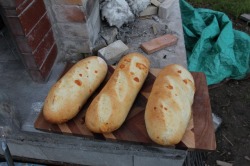
All was not lost, however. They rose reasonably well in the oven with nice crispy chunks of cheese showing!
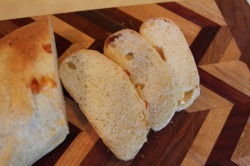
The crumb was finer and softer than I'm used to. This was a nice change from the typical open textured sourdough I've been making. The larger holes are from the melted chucks of cheese. It's been delicious bread all week and I'll definitely try it again. Without the large cheese pieces, it would make a nice hamburger bun too.
Another bread This weekend! This time it was the poolish baguette. I decided to try using my sourdough to create the poolish. I have never done this before and usually use dry yeast for this bread, however, my starter needed to be used and I thought I would give it a try. I adjusted the moisture of the poolish to accommodate the water content of the 100 g of starter I used. To determine the moisture level of my starter, I microwaved 10g on high for 5 minutes and then reweighed it. In hind sight the 100 g was too much, but more on that below.
The poolish (a 100% hydration yeast flour and water mix) was fermented over night. The next morning, I mixed all the ingredients to form a loose sticky dough. This dough seemed much wetter than I remembered and was very sticky and hard to work with. After two folds, the loaves were formed and couched for proofing.
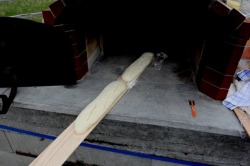
When they were ready, they were baked at 500 F for 30 minutes.

Because the dough was so loose, the loaves slumped a bit during the bake. I think now that the excess starter in the poolish may have caused it to over develop, a condition where enzymes increase in the dough, destroying the gluten and preventing a tighter structure. Lesson learned. I would like to attempt this again with less starter and perhaps a longer kneading time to maximize gluten development.
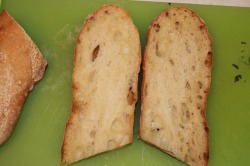
I was happy with the crumb and texture, however. The bread had good taste and was delicious with dinner :-)
It was a busy weekend. While the bagels were baked inside, I was able to fire up the wood fired oven again after some down time due to construction. This called for an old standby for me, Hamelman's Pain au Levain, a sourdough white bread.
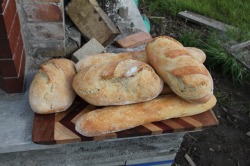
My sourdough mother was boosted in an over night fermentation to create a stiff biga starter (a low hydration dough). Approximately 8 oz was used for this bread. The oven was fired and the bread baked at about 500 F. I also have some baguettes in this picture.
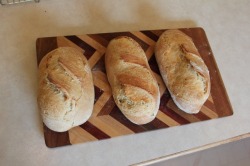
I was pleased with the results. I had good oven spring and well developed "ears" on the slashes. The crumb was open with a soft texture. It's made a great sandwich bread this week!
I haven't made bagels for many years, so this was a good refresher course.
This dough is much drier than regular bread dough. It gave the old KA a work out! The dough is divided into a bakers dozen and rolled into logs. These are then formed into rings and refrigerated over night.
The following day they were given a short proofing, boiled, and then baked.
The crumb was good, but I found the texture to be a bit too airy for a bagel. On the next try I will try developing the dough a bit more to get better gluten formation. I may also under bake them a bit. We usually toast them, and they were a little too crunchy after that. They were good fresh or microwaved, however.









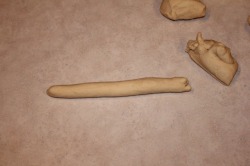
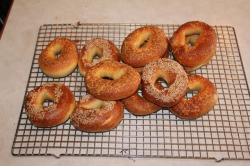
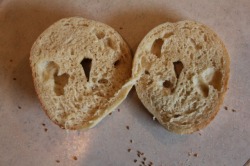
 RSS Feed
RSS Feed